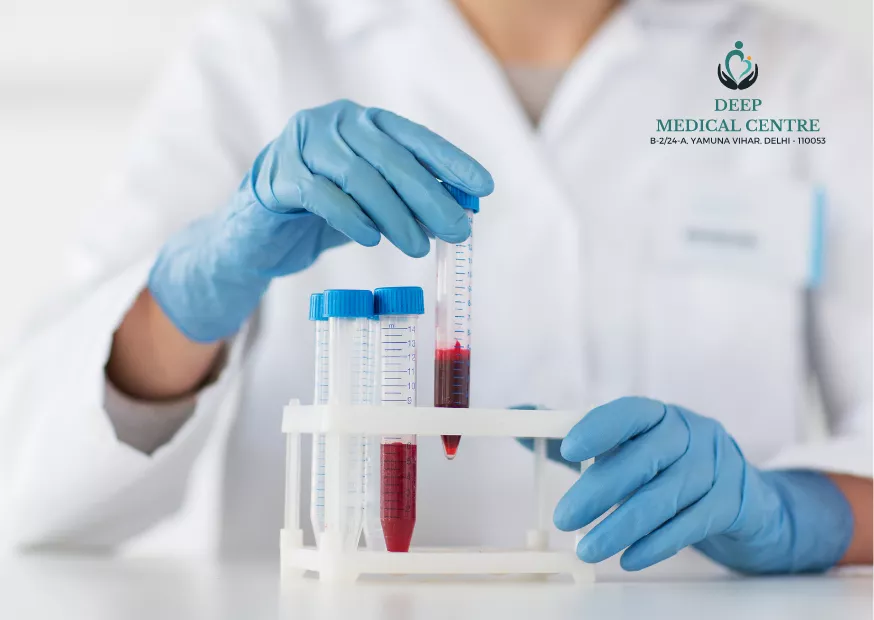
Book Your
Fetal Echography
Make Your Appointment
Opening Hours
Open Everyday From
08:30 AM – 10:00 PM
08:30 AM – 10:00 PM
Deep Medical Centre Main Branch , B – 2/24 A Yamuna Vihar Road Near Bhajanpura Petrol Pump, Delhi 110053
overview
Fetal Echography (sonogram) is an imaging technique that uses sound waves to produce images of a fetus in the uterus. Fetal ultrasound images can help your health care provider evaluate your baby’s growth and development and monitor your pregnancy. In some cases, fetal ultrasound is used to evaluate possible problems or help confirm a diagnosis.


Why is Fetal Echography done?
• Confirm the pregnancy and its location. Some fetuses develop outside of the uterus, in the fallopian tube. Fetal Echography can help your health care provider detect a pregnancy outside of the uterus (ectopic pregnancy).
• Determine your baby’s gestational age. Knowing the baby’s age can help your health care provider determine your due date and track various milestones throughout your pregnancy.
• Confirm the number of babies. If your health care provider suspects a multiple pregnancies, an ultrasound might be done to confirm the number of babies.
• Evaluate your baby’s growth. Your health care provider can use ultrasound to determine whether your baby is growing at a normal rate. Ultrasound can be used to monitor your baby’s movement, breathing, and heart rate.
• Study the placenta and amniotic fluid levels. The placenta provides your baby with vital nutrients and oxygen-rich blood. Too much or too little amniotic fluid — the fluid that surrounds the baby in the uterus during pregnancy — or complications with the placenta need special attention. An ultrasound can help evaluate the placenta and amniotic fluid around the baby.
• Identify birth defects. An ultrasound can help your health care provider screen for some birth defects.
• Investigate complications. If you’re bleeding or having other complications, an ultrasound might help your health care provider determine the cause.
• Perform other prenatal tests. Your health care provider might use ultrasound to guide needle placement during certain prenatal tests, such as amniocentesis or chorionic villus sampling.
• Determine fetal position before delivery. Most babies are positioned headfirst by the end of the third trimester. That doesn’t always happen, though. Ultrasound imaging can confirm the baby’s presentation so that your health care provider can discuss options for delivery.
• Determine your baby’s gestational age. Knowing the baby’s age can help your health care provider determine your due date and track various milestones throughout your pregnancy.
• Confirm the number of babies. If your health care provider suspects a multiple pregnancies, an ultrasound might be done to confirm the number of babies.
• Evaluate your baby’s growth. Your health care provider can use ultrasound to determine whether your baby is growing at a normal rate. Ultrasound can be used to monitor your baby’s movement, breathing, and heart rate.
• Study the placenta and amniotic fluid levels. The placenta provides your baby with vital nutrients and oxygen-rich blood. Too much or too little amniotic fluid — the fluid that surrounds the baby in the uterus during pregnancy — or complications with the placenta need special attention. An ultrasound can help evaluate the placenta and amniotic fluid around the baby.
• Identify birth defects. An ultrasound can help your health care provider screen for some birth defects.
• Investigate complications. If you’re bleeding or having other complications, an ultrasound might help your health care provider determine the cause.
• Perform other prenatal tests. Your health care provider might use ultrasound to guide needle placement during certain prenatal tests, such as amniocentesis or chorionic villus sampling.
• Determine fetal position before delivery. Most babies are positioned headfirst by the end of the third trimester. That doesn’t always happen, though. Ultrasound imaging can confirm the baby’s presentation so that your health care provider can discuss options for delivery.






